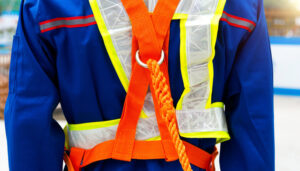Circle-to-land and runway incursion pilot training could use a more realistic approach
When experienced pilots continue to make fatal mistakes while executing routine circle-to-land approaches, it might be time to stop and wonder why. There must be something missing in our pilot training programs. Do we train enough for “real life” circling approaches circumstances?
Maybe part of the problem is that there is no surprise in the simulator. We brief the approach; the instructor tells us what to do and when to do it. “When you get here, turn 30 degrees, start your time, and go for another 30 seconds.” We write it all down in our notes and review it until there is no doubt in our minds about exactly what we need to do. But that’s not how it works in the real world.
A Lear 35 pilot in California didn’t fly to a fix, turn to a heading, and wait 30 seconds before turning back in. I’m guessing it was a continuous turn in rain and turbulence, and he was probably straining to keep the runway in sight as the bank angle kept increasing. Haven’t we all been there?
In addition to circle-to-land, runway incursions are another current hot topic. Sixty years of accident data shows that runway incursions cause 30% of accidents, and that total is growing. Think about it:
- Not checking for control movement before the takeoff roll.
- Launching with the parking brake engaged.
- Trying to fly with spoilers in the extended position.
It’s not hard to see that many accidents are preventable, yet we keep making mistakes.
Both circle-to-land approaches and runway incursion accidents deserve further investigation, and more risk mitigation would be a great place to start. When the weather is marginal, don’t accept that circle-to-land; follow your checklist to the letter and go to your alternate if necessary.
Of course, there are mechanical issues beyond our control, but that’s a risk we take flying in a thin metal tube. But the Flight Safety Foundation and the FAA are determined to reduce these preventable accidents, and they are actively discussing the topic at the 2022 Business Aviation Safety Summit. I’m sure that pilot training will be at the top of their list. Maybe it needs to be less predictable and more realistic. Getting us through our check rides and recurrent training should be secondary to ensuring we are prepared for the unexpected and unrehearsed realities of flying the line.
RELATED READING










